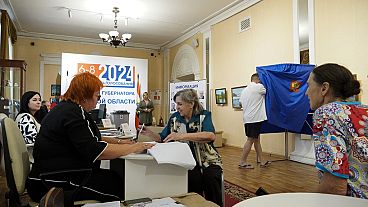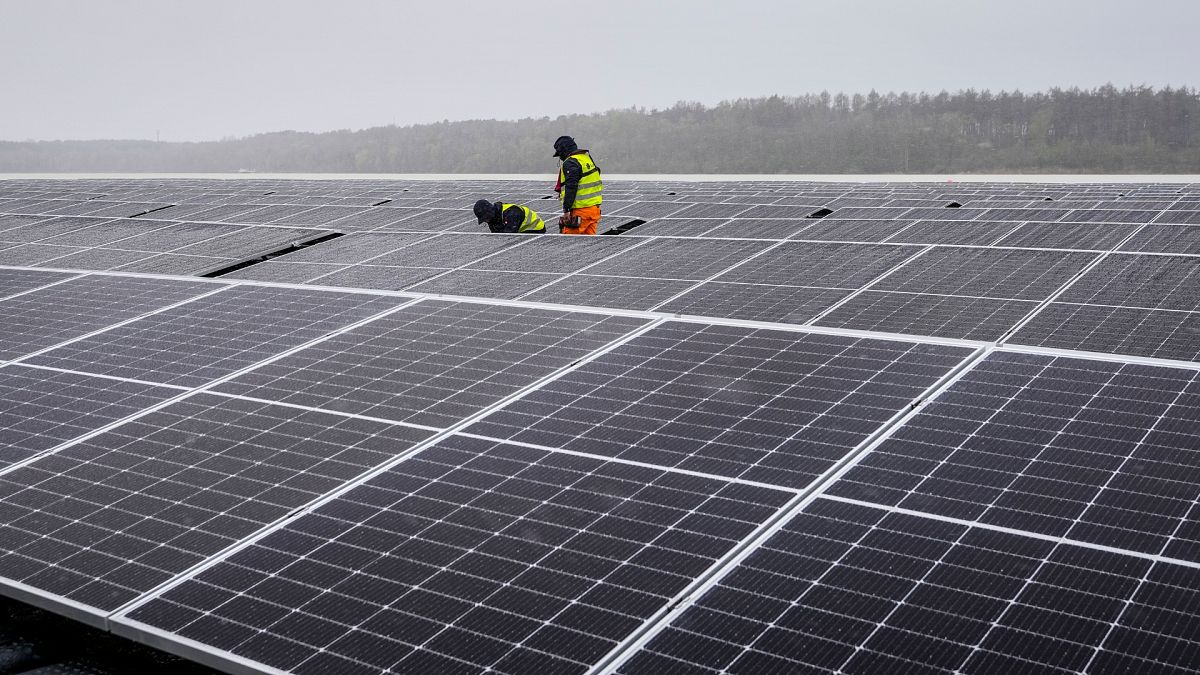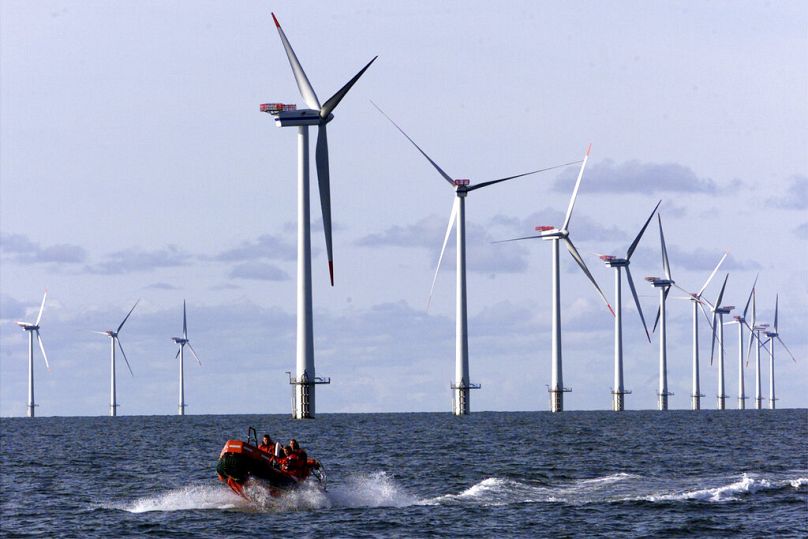Almost half of EU member states - 13 countries - produced more electricity from wind and solar over the last six months than from fossil fuels.
For the first time, wind and solar generated more of the EU’s electricity than fossil fuels in the first half of this year.
A new analysis from energy think tank Ember has found that electricity from wind and solar grew to an all-time high of 30 per cent in the last six months compared to 27 per cent from fossil fuels. The remaining 43 per cent was made up by a mix of hydropower, nuclear and other sources.
Electricity from fossil fuels fell by 17 per cent during the same period - despite demand recovering from the impacts of the gas price crisis. The EU’s continued strong roll-out of wind and solar power outpaced this rebound in demand.
“With wind and solar on the rise, the role of fossil fuels is narrowing,” says Ember analyst Dr Chris Rosslowe.
“We are witnessing a historic shift in the power sector, and it is happening rapidly.”
This has left emissions from the EU’s power sector 31 per lower in the first half of 2024 than they were in 2022.
How have wind and solar overtaken fossil fuels?
Mild weather and good performance for hydroelectric power also contributed to the EU’s drop in fossil fuel generation. But growth in wind and solar was the single largest factor according to the Ember analysis.
It comes after 2023 saw record-breaking additions to wind and solar electricity generating capacity. Many EU member states have brought in policies to accelerate the transition to these two renewables and reduce their reliance on imported natural gas.
Ember says that a continued focus on this is now anticipated following Ursula von der Leyen’s confirmation as President of the European Commission.
“If member states can keep up momentum on wind and solar deployment then freedom from fossil power reliance will truly start to come into view,” Dr Rosslowe adds.
Sustaining the pace of this electricity transition, the think tank says, will require a dedicated policy focus on easing barriers to wind and solar integration including improving the electricity grid across Europe.
"Two key priorities should be taking action to reduce grid connection times for new projects, and improving the availability of energy storage and demand side flexibility that can help make the most of wind and solar power at times when it is abundant," Dr Rosslowe explains.
Continuing to streamline permitting will also be very important to deliver more wind and solar. The EU also needs simpler rules for repowering old wind farms, and for permitting procedures to be digitalised wherever possible, according to Ember.
Auctions will continue to be a crucial mechanism to support renewables development, and governments can increase certainty by delivering those in the timelines needed and with thoughtful designs, Dr Rosslowe adds.
Which EU countries generate more power from solar and wind than fossil fuels?
Wind and solar have now overtaken fossil fuels in 13 EU member states: Austria, Belgium, Denmark, Finland, France, Germany, Hungary, Lithuania, Luxembourg, Portugal, Spain, the Netherlands and Sweden.
Together these countries make up 70 per cent of the EU’s total electricity demand, with the remaining 30 per cent spread across 14 states. Just five years ago, it was just four countries out of 27 which generated more electricity from wind and solar than fossil fuels which were responsible for only 20 per cent of the bloc’s electricity demand.
Belgium, Germany, Hungary and the Netherlands hit the milestone for the first time in the first six months of 2024.
Five countries made up three-quarters of the fall in EU fossil fuel generation in the first half of 2024: Belgium, France, Germany, Italy and Spain. Germany saw the biggest drop due to coal generation falling by more than a quarter.
Others have also hit significant renewable energy milestones in the last six months. In May, more than half of Spain’s electricity generation came from wind and solar for the first time ever. Poland hit the threshold of a third of its electricity from wind and solar in the same month. And Hungary set consecutive records for solar generation in April, May and June this year.
There's no 'secret' to the EU's wind and solar growth
The pace of the rollout of wind and solar power has exceeded many people’s expectations, according to Dr Rosslowe. It has also allowed Member States to reduce their exposure to volatile fossil fuel prices.
"There's no single secret," he says. "In fact, the range of Member States that have now passed this milestone is proof that this transition is possible anywhere in the EU, thanks in part to the distributed nature of wind and solar energy."
Wind and solar are now the most competitive sources of new energy, Dr Rosslowe adds, with the frontrunners in Europe all having managed to create the right conditions for these to flourish, from providing investor certainty, to reducing technical and procedural hurdles, and providing financial incentives.
"Other Member States such as Poland and Greece haven’t reached this milestone yet, but are showing truly impressive growth in wind and solar energy. As an example, solar generation in Poland grew by 37 per cent in the first half of 2024, the fourth largest absolute growth of any EU Member State in that period."
As they continue to scale, action is needed to enable the development of new projects and make sure households and businesses can benefit as much as possible from the cheap and abundant energy provided by wind and solar.
















